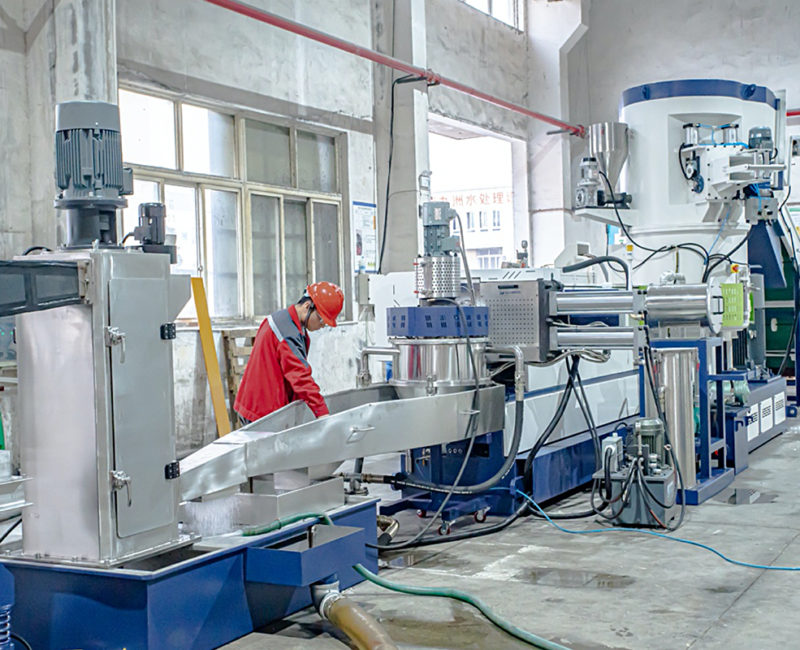Every day, our persistent production of waste products poses major environmental and health risks in all nations. Poor waste management practices and indiscriminate, improper residential litter disposal practices have made significant contributions to environmental degradation and ecological decline.
Recognising the potential harm caused by waste, nations and businesses urge appropriate rubbish recycling to reduce the amount of trash dumped in landfills and other locations that could contaminate the environment. A good waste management system also lowers carbon emissions since recycling requires less energy than producing new goods to replace what has been used and thrown away.
Additionally, recycling is a lucrative industry. People can find a lot of jobs thanks to it. You are creating jobs for people, whether you are constructing a sizable processing facility using labelling or decorating machines for recycling waste or a tiny cooperative enterprise in the neighbourhood to come up with innovative ways to reuse and recycle trash.
Recycling is the only alternative for these materials because the government also forbids the disposal of some wastes in landfills. Businesses and landfill sites must manage waste and trash on a continual basis; thus, they prefer to use waste recycling machines for their convenience.
Following are some types of recycling equipment and their intended uses:
1. Bag Opener
With the use of this device, bags can be opened without needing to be cut, preserving the contents. Due to this machine’s modular design, you can modify it to accommodate different bag types and sizes.
2. Conveyor Belts
Conveyor belts are a permanent fixture in any manufacturing or processing facility of industrial calibre. This recycling machine is crucial for moving raw materials between processing units and for moving finished goods from the processing facility to the packing area. The conveyor belt will automatically and effectively move whatever is needed.
3. Separators
Its function is to separate various waste or garbage types; it is also known as a sorting machine. To distinguish the different waste types and separate them from the others, use a disc screener or filter. This machine may be altered to filter various kinds of trash, making it very adaptable. It can be used to sort wood from stones, get rid of liquids, or separate metals from other materials.
4. Universal Shredder
For recycling, shredders are very necessary. The device is in charge of shredding the waste into more manageable pieces. Before transferring waste to another processing recycling machines, whether it be plastic, paper, or another type of waste, it is crucial to cut it up first.
5. Baling Press
A baling press is a crucial piece of recycling machines. They compress trash into bundles or bales that are firmly packed. After initial processing, trash is frequently retained in storage or compressed into bales for shipment to another facility to finish the recycling process.
6. Paper Refiner
A paper refiner would be essential to a recycling facility that specialises in recycling paper in order to ensure that the completed product is of the highest calibre. By improving the fibres’ ability to bind with one another, a paper refiner improves the strength and smoothness of recycled paper.
7. Granulators
This device crushes or chops garbage into minute particles or granules. Waste products produced by labelling or decorating machines in granule form are simpler to move or store. Before moving on to the next procedure, it could also be essential to grind the components into granules.
8. Rotatory Shears
This recycling machines has a double-shaft crusher, a high torque motor, and a moderate rotational speed. It is perfect for shredding large amounts of wire, plastic, metal, and other debris into smaller bits.
9. Reel Splitters
Both a mechanical and a hydraulic version of this machine are available. It is employed to split the paper product from the core and cut troublesome or flawed paper reels. Following separation and cutting, the paper will go through another procedure to finish recycling. Some reel splitters can also be set up to cut aluminium reels in addition to paper. Additionally, it can be used to cut compressed bundles of raw materials in bales.
10. Centrifuge Separator
This machine is perfect for plastic-specific recycling processing facilities. It is employed to tidy up, dry, and sort various kinds of crushed plastic materials. The centrifuge separator’s rotor rotates at a speed of 1,500 revolutions per minute. On the other hand, the perforated trommel moves anticlockwise. While the lighter non-plastic items and water are separated through the perforated trommel and discarded, the heavy plastic will sink to the bottom.
To Conclude,
The broad range of recycling machines covered in this overview exemplifies waste management innovation and a dedication to sustainability. These machines, which include everything from plastic shredders to can crushers, are crucial to the recycling process because they reduce waste, conserve resources, and have little adverse environmental impact. They demonstrate a global effort to address the issues of waste management and climate change. They show an international initiative to deal with the problems of waste management and climate change. Industries and communities may promote responsible consumption and waste reduction, contribute to a cleaner, greener future, and invest in recycling equipment by embracing technology. This will ensure a more sustainable and environmentally friendly earth for future generations.

